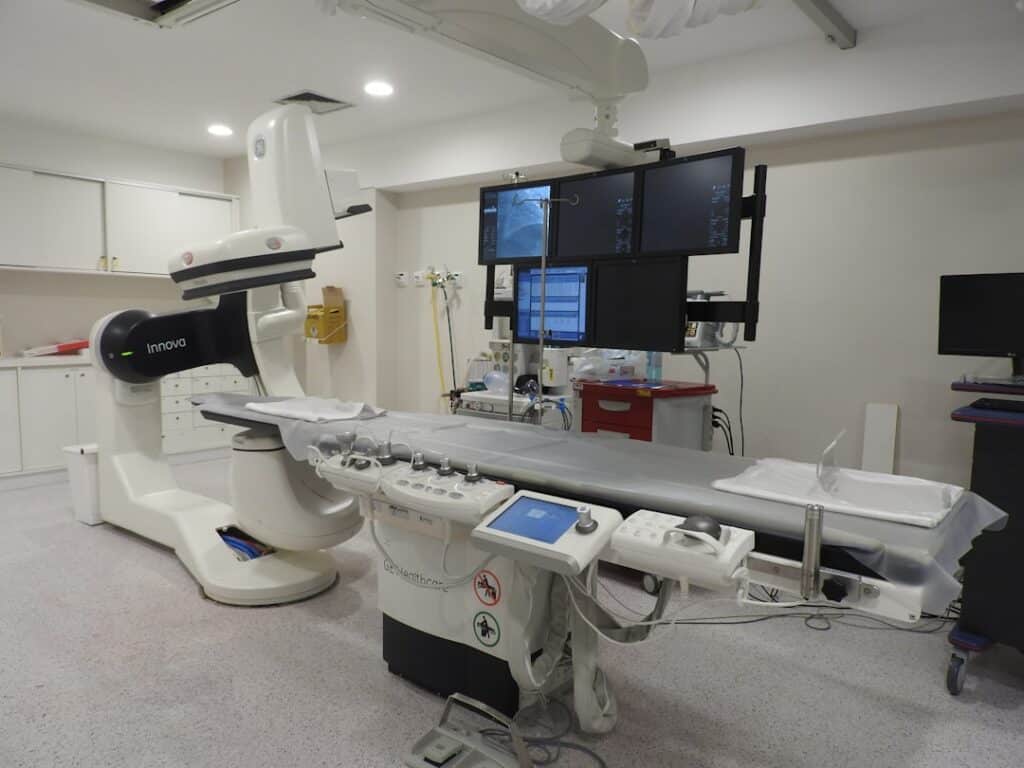In the healthcare sector, cost considerations are paramount, especially in an era of tightening budgets and increasing operational expenses. However, the allure of choosing the cheapest option can often mask significant hidden costs that may arise later. When healthcare facilities opt for lower-priced medical equipment, software, or services, they may inadvertently compromise on quality, leading to a cascade of issues that can affect both operational efficiency and patient care.
Moreover, the cheapest option often lacks the necessary support and service agreements that are crucial in a healthcare setting. For instance, a low-cost electronic health record (EHR) system may not provide adequate technical support or updates, leading to potential downtimes that disrupt patient care.
In contrast, investing in a more reliable solution may incur higher upfront costs but can ultimately save money by reducing the frequency of repairs and ensuring compliance with regulatory standards. Thus, healthcare organizations must carefully evaluate the total cost of ownership rather than simply focusing on initial purchase prices.
Key Takeaways
- Choosing the cheapest option in healthcare can lead to hidden costs in the long run, such as lower quality, higher maintenance, and potential legal and regulatory issues.
- Patient care and outcomes can be negatively impacted by choosing the cheapest medical technology or cutting corners in staff training and development.
- Quality and reliability in medical technology are crucial for ensuring the best patient care and outcomes, and cutting costs in this area can have serious consequences.
- Healthcare facilities may face long-term financial implications from choosing the cheapest options, including higher maintenance costs and potential legal and regulatory issues.
- Investing in staff training and development is essential for maintaining high-quality patient care and building trust and reputation in the healthcare industry.
- Cutting corners in healthcare decision-making can lead to legal and regulatory issues, damaging the reputation and trust of healthcare facilities.
- Building trust and reputation in the healthcare industry requires a balance between cost and quality, and cutting corners can have serious consequences.
- Finding the balance between cost and quality in healthcare decision-making is crucial for ensuring the best patient care and outcomes while managing financial implications.
The Impact on Patient Care and Outcomes
The ramifications of selecting the cheapest option extend beyond financial implications; they significantly impact patient care and outcomes. Quality medical technology and services are essential for accurate diagnoses, effective treatments, and overall patient safety. When healthcare providers utilize subpar equipment or software due to cost-cutting measures, they risk compromising the quality of care delivered to patients.
For example, inaccurate diagnostic tools can lead to misdiagnoses, delayed treatments, and ultimately poorer health outcomes. Furthermore, the reliability of medical technology directly correlates with patient satisfaction. Patients expect their healthcare providers to utilize state-of-the-art equipment and technology that enhance their treatment experience.
When facilities invest in high-quality solutions, they not only improve clinical outcomes but also foster trust and confidence among patients. This trust is vital in an industry where patient engagement and satisfaction are increasingly linked to successful treatment outcomes and overall organizational reputation.
Quality and Reliability in Medical Technology

Quality and reliability are non-negotiable attributes in medical technology. Healthcare providers must ensure that the tools and systems they employ are not only effective but also dependable. High-quality medical devices and software solutions are designed to meet rigorous industry standards and undergo extensive testing before reaching the market.
In contrast, cheaper alternatives may cut corners in manufacturing or software development, leading to unreliable performance. For instance, consider the case of a hospital that opted for a low-cost imaging system. While the initial investment was attractive, the system frequently malfunctioned, resulting in delays in patient diagnoses and treatments.
By prioritizing quality over cost, healthcare organizations can avoid such pitfalls and ensure that their technology supports rather than hinders patient care.
Long-term Financial Implications for Healthcare Facilities
The long-term financial implications of choosing cheaper options can be profound. While initial savings may seem appealing, the reality is that these decisions often lead to escalating costs over time. Maintenance expenses for low-quality equipment can accumulate quickly, as can costs associated with training staff on unreliable systems or replacing outdated technology more frequently than anticipated.
Additionally, healthcare facilities that prioritize cost over quality may find themselves facing regulatory fines or penalties due to non-compliance with industry standards. For example, if a facility uses outdated software that fails to meet HIPAA requirements for data security, it could incur significant fines if a data breach occurs. Therefore, investing in high-quality solutions not only mitigates these risks but also positions healthcare organizations for long-term financial stability.
The Importance of Investing in Staff Training and Development
Investing in staff training and development is another critical aspect of ensuring quality care in healthcare settings. Even the most advanced medical technology is only as effective as the personnel operating it. When organizations choose cheaper options for training programs or neglect ongoing education altogether, they risk underutilizing their investments in technology.
Comprehensive training programs empower staff to use medical devices and software effectively, leading to improved patient outcomes and operational efficiency. For instance, a well-trained team can leverage advanced analytics tools to identify trends in patient data, enabling proactive interventions that enhance care quality. Conversely, inadequate training can result in errors that compromise patient safety and lead to costly legal repercussions.
How Cutting Corners Can Lead to Legal and Regulatory Issues

Cutting corners in healthcare decision-making can have serious legal and regulatory ramifications. The healthcare industry is heavily regulated, with strict compliance requirements designed to protect patient safety and privacy. When organizations prioritize cost savings over compliance with regulations such as HIPAA or FDA standards, they expose themselves to significant risks.
For example, a facility that opts for a low-cost electronic health record system lacking robust security features may inadvertently facilitate a data breach. Such incidents not only jeopardize patient confidentiality but also attract legal action from affected individuals and regulatory scrutiny from government agencies. The financial repercussions of non-compliance can be severe, including hefty fines and damage to the organization’s reputation.
Building Trust and Reputation in the Healthcare Industry
In an industry where trust is paramount, building a solid reputation is essential for healthcare organizations. Patients are more likely to choose providers known for their commitment to quality care and safety. When facilities prioritize cost over quality, they risk damaging their reputation among patients and within the broader healthcare community.
A strong reputation is built on consistent delivery of high-quality care supported by reliable technology and well-trained staff. Organizations that invest in quality solutions demonstrate their commitment to patient safety and satisfaction, fostering trust among patients and stakeholders alike. This trust translates into patient loyalty, positive word-of-mouth referrals, and ultimately improved financial performance.
Finding the Balance Between Cost and Quality in Healthcare Decision-making
Finding the right balance between cost and quality is a complex challenge faced by healthcare decision-makers. While budget constraints are a reality for many organizations, it is crucial to approach purchasing decisions with a long-term perspective. Evaluating total cost of ownership—including maintenance costs, training needs, and potential legal liabilities—can provide valuable insights into the true value of an investment.
Healthcare leaders should also consider leveraging partnerships with trusted vendors who prioritize quality and reliability over price alone. Collaborating with managed service providers (MSPs) can help organizations navigate the complexities of technology procurement while ensuring compliance with industry standards. By prioritizing quality alongside cost considerations, healthcare facilities can make informed decisions that enhance patient care while maintaining financial sustainability.
In conclusion, while cost considerations are essential in healthcare decision-making, prioritizing quality over price is crucial for ensuring optimal patient care and long-term organizational success. The hidden costs associated with choosing cheaper options can lead to significant financial implications, compromised patient outcomes, legal issues, and reputational damage. By investing in high-quality medical technology, staff training, and compliance measures, healthcare organizations can build trust with patients while positioning themselves for sustainable growth in an increasingly competitive landscape.
Ultimately, finding the right balance between cost and quality will empower healthcare leaders to make informed decisions that benefit both their organizations and the patients they serve.
When it comes to patient care, tech solutions, or your bottom line, cutting corners by choosing the cheapest option can often lead to more problems in the long run. In fact, a recent article from Tech Rockstars highlights the importance of physical security as a crucial aspect of comprehensive cybersecurity. This article emphasizes the need for businesses to invest in robust security measures to protect their data and assets from cyber threats. Just like in healthcare, where quality care often requires investing in the best resources and practices, in the tech world, prioritizing security can ultimately save you time, money, and headaches down the line.
FAQs
What are the drawbacks of choosing the cheapest option for patient care?
Choosing the cheapest option for patient care can lead to lower quality of care, potential safety risks for patients, and higher chances of medical errors. It can also result in higher long-term costs due to the need for additional treatments or interventions.
How does opting for the cheapest technology impact patient care?
Opting for the cheapest technology can lead to outdated or ineffective tools, which can hinder the ability to provide accurate diagnoses and appropriate treatments. This can ultimately compromise patient care and outcomes.
What are the potential consequences of prioritizing the cheapest option for your bottom line?
Prioritizing the cheapest option for your bottom line can result in higher costs in the long run due to the need for replacements, repairs, or additional resources to compensate for the shortcomings of the initial cheap option. It can also lead to missed opportunities for efficiency and innovation.
Why is the cheapest option rarely the best for patient care, tech, or your bottom line?
The cheapest option often sacrifices quality, effectiveness, and long-term value. In the context of patient care, prioritizing cost over quality can compromise patient safety and outcomes. In terms of technology, the cheapest option may not provide the necessary capabilities for optimal performance. From a business perspective, the cheapest option may lead to higher costs in the long run and missed opportunities for growth and innovation.


